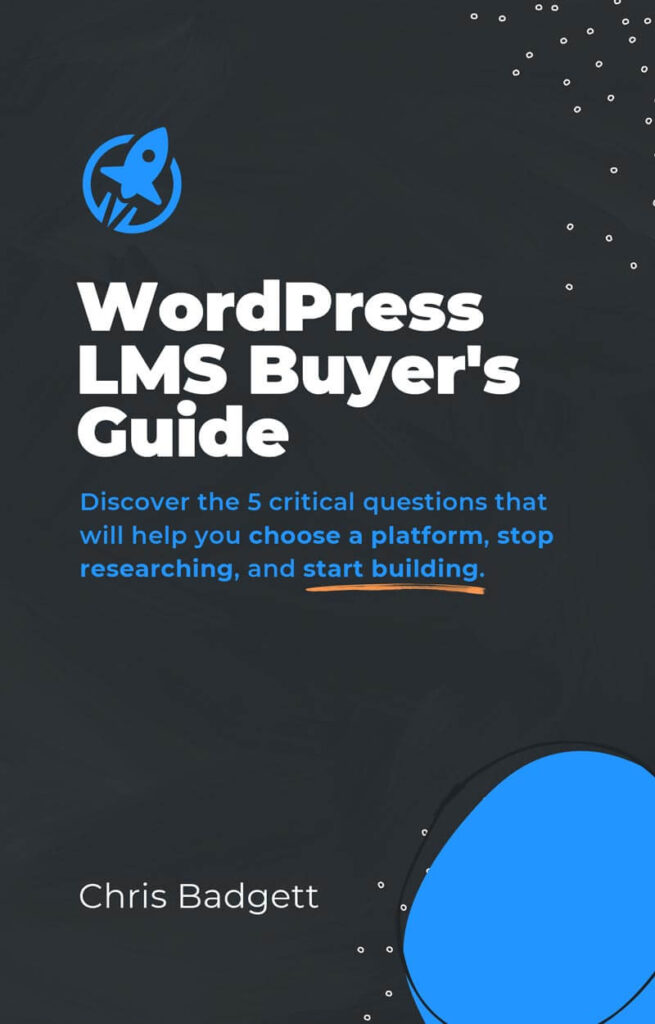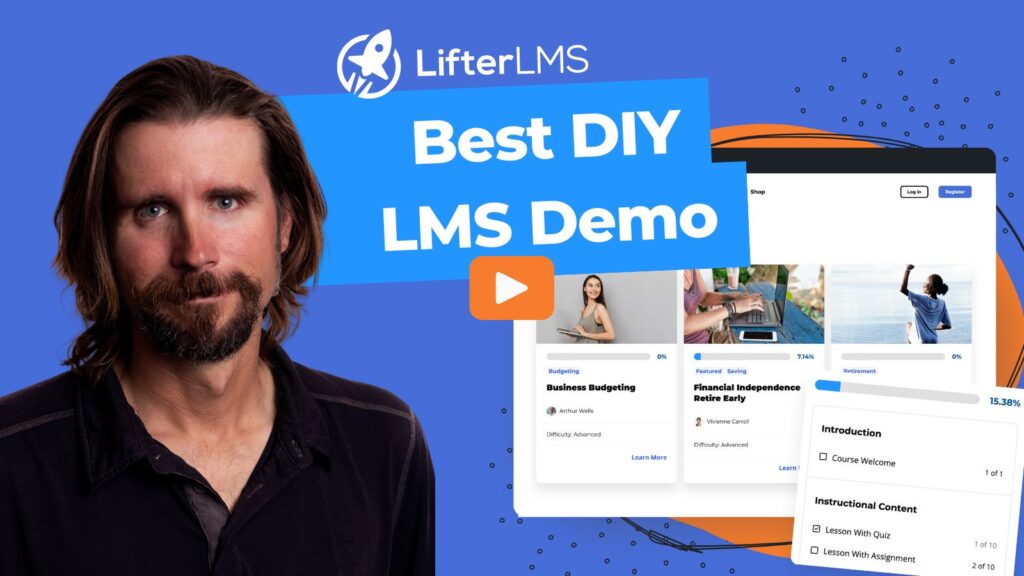It’s marketing 101: you need to get the word out about your product so that people know and buy it. But marketing takes time, effort, and money that many course creators just don’t have.
So how do you promote your course without a huge marketing budget? The answer is simple: get your students to do it for you.
The process of getting students involved in marketing starts with understanding their needs — and not just what they think they want, but what will make them loyal to your brand.
Students are more likely to be enthusiastic promoters if the benefits are clear and relevant, if access is easy, and if they feel part of the team by being recognized for their contributions.
Let’s take a look at a few ways to get your students to market your course for you.
1. Share Their Accomplishments on Your Blog
Providing a behind-the-scenes look at your students’ experience with your course can generate interest in new students, show that you are trustworthy, and let people know that the content is valuable.
Not only that, but blogging paired with good SEO will increase the chances of your content and course being found through organic search, which means more traffic that could be turned into paying customers.
Depending on the type of course you have, you could use blog posts to show your students’ progress.
For example, if you teach a coding course and have students implement what they’ve learned, your blog posts could be about the projects they’ve been working on with the skills they’ve acquired so far. If your course is more theoretical in nature, then it would make sense to highlight the accomplishments of your highest-performing students.
Here are some ideas of blog posts you could write about your customers’ accomplishments:
- The Best Outcome From a Course so Far
- What Happened When I Asked My Students for Their Feedback
- [X] Tips From the Student Who Got Everything Right on the First Try
- A Student’s First Steps Into [course topic]
- How One of My Students [what they accomplished] In [X] Days
2. Repost Them on Social Media
Another great way to get your students to market your course is by being active and engaging with them on social media.
Let’s say you created a knitting course, in this case, you could encourage students to share photos of things they’ve knitted, such as scarfs, beanies, or blankets. For a digital course teaching students how to get clients for their agency, you could have them share screenshots of their growth.
When they do, make sure that you repost and tag them so others can easily follow their lead and learn about your course.
People love feeling seen and acknowledged, and when they get to have their accomplishments shared with the world, it makes them feel happy.
This strategy works great for any type of business. Here’s an example of a fitness and nutrition company — Lambda Physiques — that always reposts its coaching clients.
Here are a few tips to encourage students to share about your course on social media:
- Be active. If you’re constantly posting content and engaging with them, they’ll be more likely to share thoughts about your course and tag you.
- Include social sharing buttons. Make sharing easier by adding these to your course landing, confirmation, and thank you pages.
- Hold contests and giveaways. People love to compete, but even more than that, they love free stuff. You can hold several small giveaways to build momentum on social media. When it comes to contests, these will help you get a lot of user-generated content with your hashtags.
- Offer good incentives. This could be discounts for your next course, access to premium content, or some generous affiliate commission.
3. Provide a Generous Affiliate Commission
It’s not uncommon to see course creators offering between 40-50% affiliate commission — sometimes even 60%.
The budget-friendly side of you might be having a panic attack right now, but give it some thought.
When you create an online course using a platform like LifterLMS, you don’t have to invest in inventory, deal with storage costs, or worry about ordering enough units to meet demand.
You can sell as many “units” of your course as you’d like without ever running out or paying for shipping.
With these savings, you can afford to offer a generous affiliate commission and still make a tidy sum of profits, which will make your students more excited about promoting your course.
Besides, students would be marketing to an audience you probably would never reach if it weren’t for them — and they’re the ones doing all the hard work.
Don’t let your course lay there collecting digital dust.
4. Create Marketing Materials for Your Course
For easier marketing, you can provide your students with banners, email templates, pre-written social media captions, videos, or even memes. They’ll find it easier to market your course if they only have one additional step: adding affiliate links in their emails or tweets.
To create graphics, you could use a digital design tool like Canva, which has a ton of professional-looking templates for social media, marketing, business, education, and personal occasions.
When it comes to writing high-converting copy for emails, social media captions, and headlines, you could use an AI writing software.
For example, Jasper AI has a template that allows you to generate compelling marketing copy with one click. All you need to do is add the name of your course, what it is about, and it’ll write the copy for you.
5. Give Free Access or Discount to Future Courses
A great way to build a stronger relationship with your students is to offer them exclusive offers, such as free access to premium content or a discount on future courses — especially if your courses carry a hefty price tag.
People generally invest large sums of money in online courses and rarely want to pass up the opportunity to get something for free or at a discounted price.
Giving students exclusive access will give a sense of reward, which can make them more likely to share your course via word-of-mouth. This is a powerful strategy because people are more likely to trust and purchase something that’s been recommended by their friends.
6. Display Social Proof
Instead of telling others how awesome your course is, get proof from students who have already taken it and display it on your website’s homepage, landing page, checkout page, emails — everywhere.
This tells potential students that other people have already benefited from it, and they might too. Not surprisingly, about 70% of online shoppers typically read between one and six customer reviews before making a purchasing decision, according to Statista.
If you explore LifterLMS’ homepage, you’ll see a ton of quotes and reviews from its users.
Here are some ways you can display social proof:
- Show results from students who have completed the course
- Show online reviews, ratings, and testimonials
- Show any award you’ve won or recognition received
- Show the number of students who are taking your course
If you’re using LifterLMS, you can easily check the number of enrolled students by accessing the reporting area, which is a powerful data analysis tool for instructors.
7. Create Video Testimonials
While written testimonials are great, some users might not trust that the quote is faithfully represented. With video testimonials, you can increase trustworthiness by showing a human face behind the review.
Here are a few reasons why video testimonials are so effective:
- They’re excellent at conveying emotion since people will be able to see your student’s facial expression and changes in tone that add resonance to a thought
- They can be easily shared and are visually interesting enough to encourage people to do so
- They are longer than written testimonials, which makes them more persuasive
- They add the human factor that many modern businesses lack, especially online ones
Needless to say, asking for video testimonials is never easy. To increase your chances of success, ask students personally and authentically instead of sending a generic broadcast message asking who’s willing to record one.
Take the time to send a personalized email, message them on social media, or lead by example and send over a video email.
However, the most important factor when asking for a video testimonial is the way you actually ask. Don’t try to convince someone to record a video if they’re not interested, but help them see why their story is important to you.
For instance, you could send a short message telling them how proud you are of everything they’ve accomplished with the help of your course, and would love for them to share their story to inspire other like-minded individuals looking to get the same results.
Wrapping Things Up
If you want your students to do some of the marketing for you, there are a variety of ways that you can encourage them. It may take more effort on your part to set up this strategy and make sure that it is executed well, but these seven tips should help you get started!






